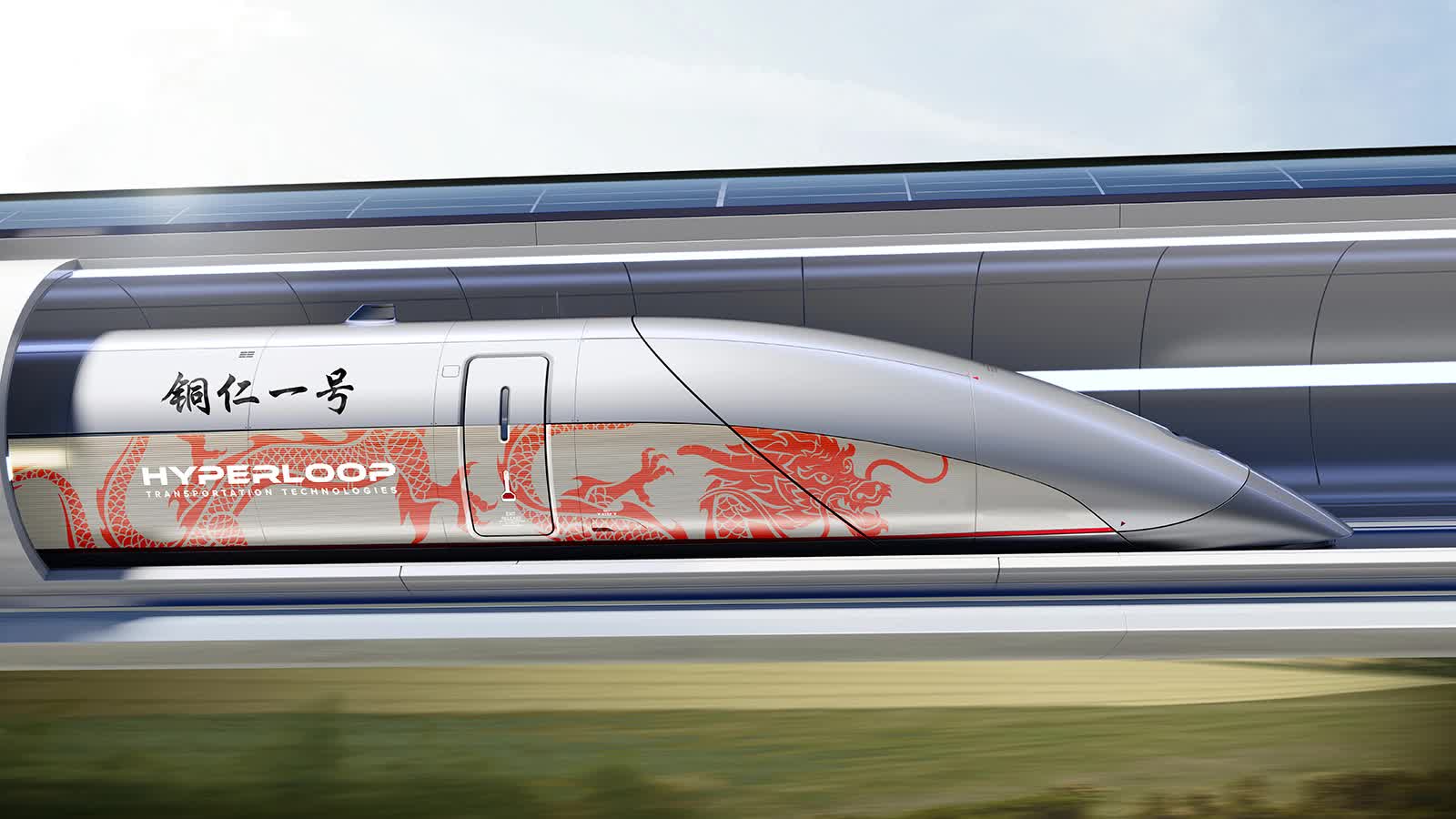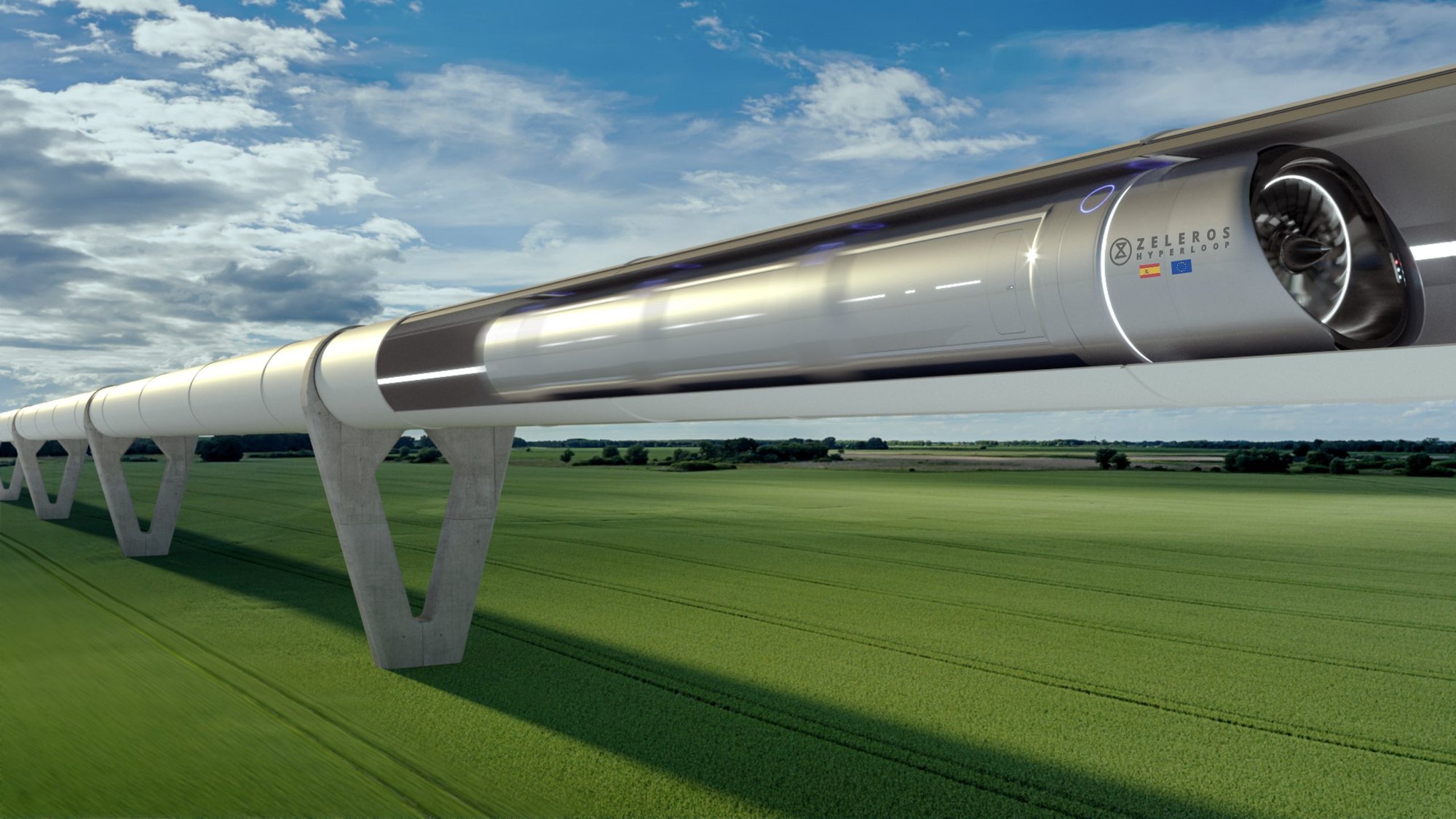China successfully tested the Hyperloop for the first time, which can ‘fly on the ground’ at a speed of 1000km / h
- Tram Ho
Accordingly, this is also the first time that a super-speed train system using hyperloop technology in China has been successfully tested, which brings a lot of advantages compared to conventional high-speed train technology.
Specifically, magnetic cushion technology will help eliminate friction when the train moves, helping the train to operate more smoothly. Meanwhile, operating the vessel in a low-friction vacuum pipeline helps to limit drag and noise. When operating, the carriages carrying passengers and goods will be brought inside the pipeline system.
Inside the tube, all the air is sucked out, allowing the vessel to travel at super-fast speeds with low energy consumption in a near-vacuum environment. These are considered plus points of hyperloop technology.

Although behind US tech companies in Hyperloop technology, China will likely be the first country to make this technology a reality. Photo: Internet
At the present time, the maglev train prototype has carried out three test runs at a superconducting maglev test pipeline in Datong, Shanxi province (China). The test results showed that this super-high-speed maglev train was operating normally when the train speed exceeded 50km/h on the test route.
It also tested a number of important technologies, along with verifying the reliability and correct operation of the super-high-speed maglev system. At present, the vacuum pipeline used for testing is only 1.24 miles (2 km) long. It is expected to be extended to 37 miles (60 km) over the next few years, in three phases.
The team at China Aerospace Science and Industry Corporation (CASIC) hopes that, if successfully developed, the hyperloop technology can carry passengers and cargo at a speed of 621. mph (1,000 km/h) or faster in a near-vacuum tube. At this speed, the maglev runs in the vacuum pipeline “like flying on the ground”, on par with the speed of an airplane.
According to the Global Times, China’s development of maglev ships has benefited from the rapid development of new industrial materials in the country. For example, maglev train tracks need to use steel with low magnetic permeability or slow response to magnetic fields to avoid the possibility of generating eddy currents, which can cause energy loss during operation. .
Compared to many other countries, China currently operates the largest high-speed rail network in the world, with a total length of more than 26,000 miles (42,000 km). The government has ambitious plans to increase the top speed of trains to 248 mph (400 km/h) over the next two years.
As a result, the country has invested heavily in hyperloop technology. In October 2022, researchers at North China University also successfully completed the test of a Hyperloop-like train system inside a vacuum tube.
Many advantages, but still many barriers
It must also be added that the idea of Hyperloop technology is not new, when it was rekindled in 2012 by technology billionaire Elon Musk, At that time, the founder of SpaceX developed The Boring Company to transform this idea into reality. Then, billionaire Richard Branson, founder of Virgin Galactic, also established his own hyperloop technology research and development company, called Hyperloop One (later renamed Virgin Hyperloop).

At a speed of 1000km / h, the maglev train runs in a vacuum pipe “like flying on the ground”, on par with the speed of an airplane. Photo: Internet
Since then, however, both companies have faced technical challenges and financial burdens.
Accordingly, the cost issue when operating Hyperloop is the problem that needs to be solved first. In 2013, SpaceX CEO Elon Musk estimated the cost of building infrastructure (including pipelines, bridges, tunnels, buying land …) at about 19 million USD per km for the 500km Hyperloop route, connecting Los Angeles between Los Angeles. – San Francisco.
However, after that, the estimated cost became more and more expensive. According to internal documents of Virgin Hyperloop obtained by Forbes magazine (USA) in 2016, the cost to build 1km of hyperloop tunnel costs up to 100 million USD. In August 2020, a preliminary feasibility study for the Hyperloop train by Transport Canada concluded a cost of $56 million per kilometer for the 300km Calgary-Edmonton route.
In addition, there are many other problems for Hyperloop technology to become possible. For example, the speed of about 1,000km/h of the Hyperloop train is only a theoretical speed calculated based on the assumption of a straight route without sharp turns. At a speed close to the speed of sound, the bends in the vacuum tunnel must be hundreds of kilometers long to withstand the centrifugal effect when the train moves.
In addition, the safety of passengers when the train crashes is also something to consider, for example, the plan to evacuate passengers from the vacuum pipeline, which has no air. Not to mention, when the Hyperloop train runs at a speed of up to 1,000km / h, if an emergency brake occurs, how will the train change speed.
Finally, the number of passengers that the Hyperloop train can carry is significantly less than that of a regular bullet train. Theoretically, Hyperloop trains can carry 1,000 passengers per hour, 20 times lower than high-speed trains (reaching 20,000 passengers per hour). With such a small number of passengers, it is very difficult for Hyperloop trains to have competitive fares with airlines, while the operating costs of this type of train are too expensive.
Reference Interesting Engineering / Wikipedia
Source : Genk
